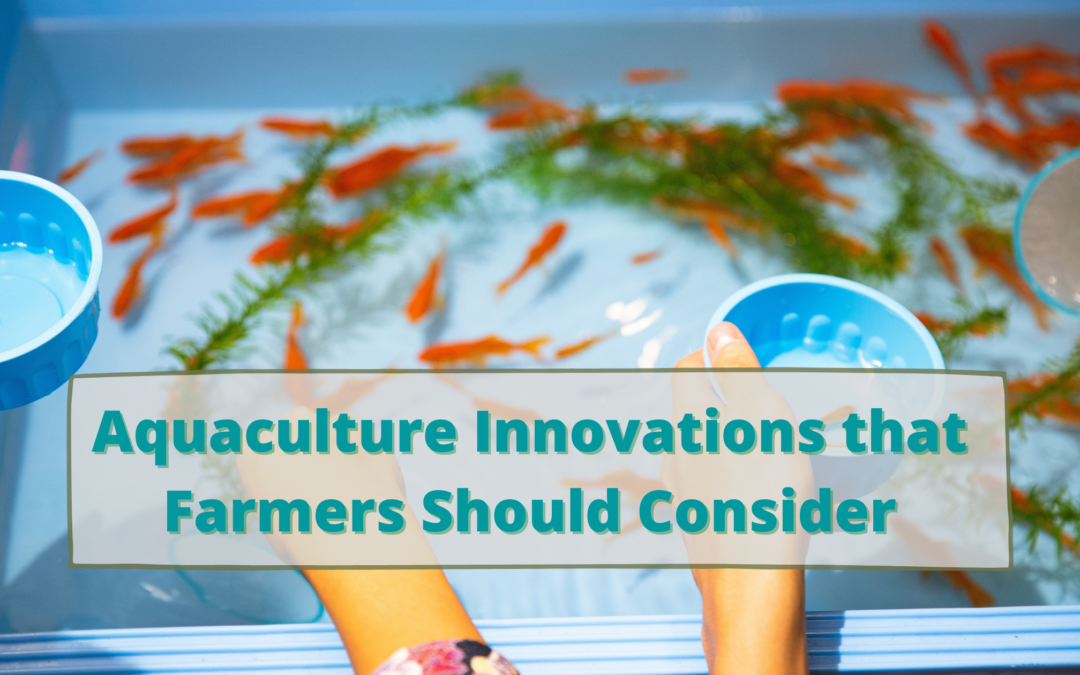Aquaculture is one of the fastest food industries alongside livestock and crop production. It is the process of breeding, rearing, and harvesting aquatic species of both plants and different fish species in controlled aquatic environments. Aquaculture serves diverse purposes such as food production. It also helps with the restoration of threatened and endangered species, enhancement of wild stock population, habitat restoration, fish cultures, and building of aquariums.
Aquaculture entails the farming of fish such as crustaceans, mollusks, algae, aquatic plants, and other organisms. It entails the use of freshwater or saltwater for fish farming under controlled conditions. The type of aquaculture that one opts for highly depends on the hydrobiological features, the special operational techniques, and the motive of farming. Fish farming is one of the common types of aquaculture and it involves selective breeding of fish which can either be done in freshwater or seawater.
Innovations in Aquaculture
There are a number of areas that have been impacted by the innovations in aquaculture and having knowledge of them can be of great help to the farmers. As much as there are various areas within this industry that are in great need of innovation; the following areas provide farmers with tremendous opportunities. These areas include; disease prevention, fish meal replacement, sustainability solutions, vaccine delivery, and supply chain management.
Disease Prevention
Disease prevention has become an important aspect of aquaculture. Change in water quality and the temperature has a way of making the animals feel stressed and more susceptible to disease. Compared to land-based agriculture where innovation is quite evident, such as lacking in aquaculture. The aquaculture industry has less chance when it comes to disease prevention. Vaccines are still manually administered and great preventive measures are lacking for many infestations.
There are, however, emerging opportunities for sustainable innovations that can address mass sea lice and other infections This might include measures such as the use of feed supplements to boost the natural defense to infection. For example, the use of probiotics can help improve shrimp health and immunity. This is one area that’s quite in dire need of effective and scalable innovation.
Fish Meal Replacement

Most feeds heavily rely on fish oil and fish meal that’s made from recycled fish parts. Overfishing has put the supply of fish parts at risk and considering the rate at which aquaculture is growing; it’s likely to put a strain on the traditional fish meal supplies. There are, however, plant-based solutions that are in development. There are also other feed options such as algae feed and insect-based feed.
Aquaculture sustainability
With the looming threats due to overfishing and ocean warming; aquaculture farmers are considering ways that can be used to increase environmental, economic, and social sustainability. Factors such as conservation, quality control, and the efficient use of feeds have been incorporated into the entire process.
Oral Delivery of Vaccines
Another innovative area entails tackling disease prevention. The Hand-injection method has been quite labor-intensive and new ways are being explored to make the process easier.
Are you considering venturing into aquaculture? Join a community of like-minded farmers for valuable insights and advice related to aquaculture farming. Visit our EAT FREE Community for more information on sustainable farming practices.
P.S: We hope you enjoyed this article. Please type your thoughts in the comment section below. For more online learning opportunities, join our EAT Community where you can make a little money making the planet better.



